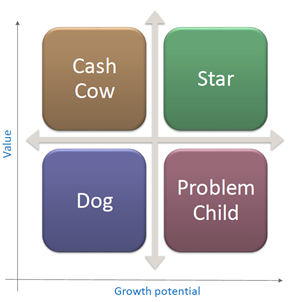How to overcome barriers in partnership management

Corporate fundraising can be a joy. But it can also be challenging. We know there are some particular pain points that come up time and time again – so wanted to address these for you below.
This blog will give you the confidence, skills and tools you need to deliver a better partnership experience. This, in turn, will ensure your charity delivers its mission faster and with greater certainty.
So let’s get started.
Time
Not having enough time in the day is the most common challenge facing corporate partnerships professionals. Our recommendation to make the most of the time you have is to prioritise your partners, and allocate your time based on that prioritisation.
By mapping your current partnerships against the Boston Matrix (image below), you can see…

- Consistent cash cows, who will always deliver but could have elements automated
- Your star partners, who deserve time investment to grow their value
- Dogs, that are low in value and don’t have growth potential. These are ones to really be strict with – what can you automate or delegate?
- Problem children, who you need to truly investigate the growth potential of when you have the time.
Alder Hey Children’s Charity have recently done this exercise, which has enabled them to put good processes in place to deliver all their current partnerships, whilst allowing them to free up some much needed time to pitch to those with growth potential.
If you are looking for more inspiration and some examples on growing your existing partnerships , then read our recent blog here.

Managing Expectations
When managing partnerships, it is inevitable that expectations get higher and higher as time goes on.
One of the best ways of managing expectations is to have a clear plan in place at the beginning of each year of the partnership. This should detail the goals and activities for the year.
This doesn’t mean the partnership plan can’t evolve over time but my ensuring the goals are written down, and agreed by both sides then you will be on the same page about the priorities vs the ‘nice to have’. If a piece of work isn’t working towards a partnership goal, you will want to discuss if it is truly required. The word ‘no’ is a powerful tool for your partnerships team.
The other tool for managing expectations is agreeing reasonable timeframes for requested work. You must remember that a partner will understand you are lower on resource, and therefore may move more slowly.
Handling difficult conversations
Difficult conversations are bound to occur in even the most collaborative and authentic of partnerships. It may be a factor outside of your control that has caused a problem, or maybe one partner needs to tell the other something that won’t be easy to hear.
The first thing is to address difficult conversations head on. The best first step is to pick up the phone and have a conversation. Listen first, take a breather, then consider how best to respond. People will admire your transparency.
Secondly, ensure that your partnership is like Velcro – that as many of your colleagues are connected to as many of theirs as possible. Some conversations are more appropriate at a CEO to CEO level, or one marketing colleague meeting another.
Finally, ensure you have face to face meetings often. Research shows that only 7% of your intended meaning comes across when communication is only in words, so if you are trying to discuss a difficult topic, get on Zoom or face to face as soon as possible. The relationship will be much stronger because of it.
Partnership agreements
Do you have agreements in place with each of your partners? Are you confident the agreement covers everything it should? This uncertainty is a very common problem we hear about.
Our recommended solution is firstly to seek out any legal support that your charity have. Many charities use legal advisers (either paid or pro-bono) to progress their required legal matters – a common pro-bono project is to create some simple corporate partnerships templates agreements to use. If you don’t have any legal support yet, then we would be happy to share our own templates with you – simply email team@remarkablepartnerships.com with “template agreements” in the email subject.
Our second recommendation is to refer to the Fundraising Regulator and their Fundraising code of practice which sets the standards that apply to fundraising carried out by all charitable institutions and third party fundraisers in the UK. The answers to many of your questions can be found here.
Conclusion
We hope you have enjoyed finding out about the solutions to corporate fundraisers’ most common pain points. Perhaps you can identify one or two that you can begin working on today.
If you want to gain more experience in partnership planning, delivering and growth, then check out our Partnerships Growth Crash Course. Find out more here.




